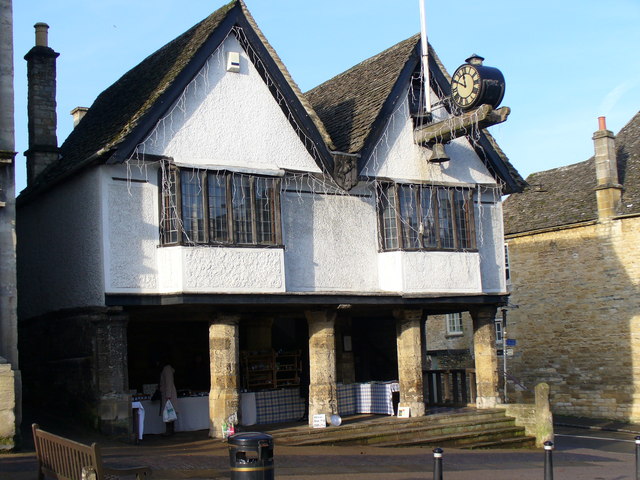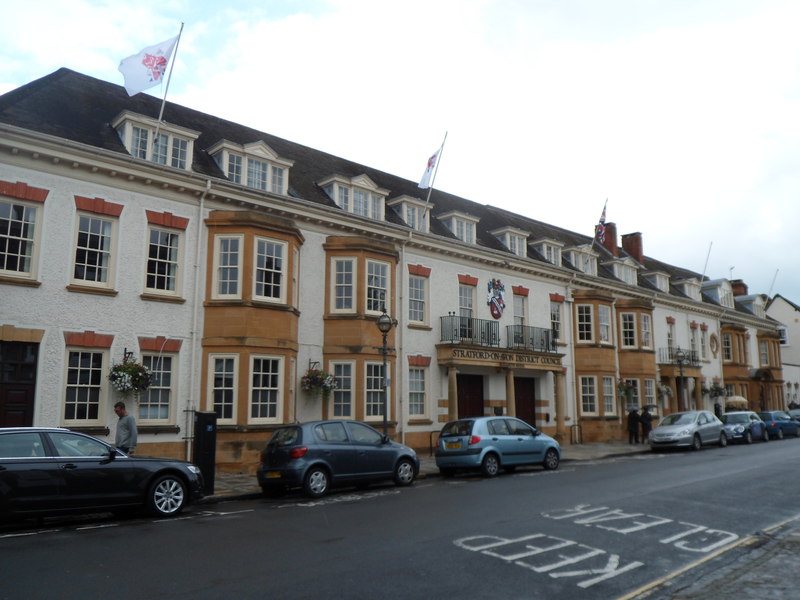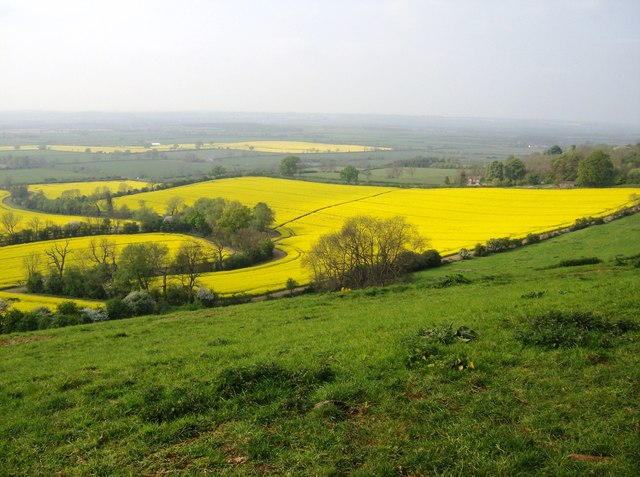|
Whatcote
Whatcote is a village and civil parish in Warwickshire, England, about northeast of Shipston on Stour in the Vale of the Red Horse.Edwards, 1950, p.51 The population at the 2011 census was 143. Manor The Domesday Book records that in 1086 Hugh de Grandmesnil, one of William the Conqueror's military commanders, owned the manor of Whatcote.Salzman, 1949, pages 202-205 In the latter half of the 14th century Thomas Stafford, 3rd Earl of Stafford acquired the manor. It remained with the Stafford family until 1520 when Edward Stafford conveyed the manor to Sir William Compton. It remained with the Compton family, the Marquess of Northampton until early in the 19th century, but by 1826 it had been acquired by Sir Adolphus Dalrymple. By 1865 Sir Adolphus had sold it to the Peach family, who in turn sold it to Thomas Parker. Parish church The Church of England parish church of St. Peter was built in the first half of the 12th century. The nave survives from this period, with a ... [...More Info...] [...Related Items...] OR: [Wikipedia] [Google] [Baidu] |
Burford
Burford () is a town on the River Windrush, in the Cotswold hills, in the West Oxfordshire district of Oxfordshire, England. It is often referred to as the 'gateway' to the Cotswolds. Burford is located west of Oxford and southeast of Cheltenham, about from the Gloucestershire boundary. The toponym derives from the Old English words ''burh'' meaning fortified town or hilltown and ''ford'', the crossing of a river. The 2011 Census recorded the population of Burford parish as 1,422. Economic and social history The town began in the middle Saxon period with the founding of a village near the site of the modern priory building. This settlement continued in use until just after the Norman conquest of England when the new town of Burford was built. On the site of the old village a hospital was founded which remained open until the Dissolution of the Monasteries by King Henry VIII. The modern priory building was constructed some 40 years later, in around 1580. The town cen ... [...More Info...] [...Related Items...] OR: [Wikipedia] [Google] [Baidu] |
Stratford-on-Avon (district)
Stratford-on-Avon is a local government district in southern Warwickshire, England. The district is named "Stratford-on-Avon" unlike its main town of Stratford-upon-Avon where the district council is based. The district is mostly rural and covers most of the southern half of Warwickshire. As well as Stratford, other significant places in the district includes the towns of Alcester, Southam, Shipston-on-Stour and Henley-in-Arden, and the large villages of Bidford-on-Avon, Studley and Wellesbourne, plus numerous other smaller villages and hamlets. It borders the Warwickshire districts of Warwick to the north, and Rugby to the north-east. It also borders the neighbouring counties of the West Midlands, Worcestershire, Gloucestershire, Oxfordshire, and Northamptonshire. History The district was formed on 1 April 1974 under the Local Government Act 1972 by the merger of the municipal borough of Stratford-upon-Avon, Alcester Rural District, Shipston-on-Stour Rural District, Sout ... [...More Info...] [...Related Items...] OR: [Wikipedia] [Google] [Baidu] |
Vale Of The Red Horse
The Vale of Red Horse, also called the Vale of the Red Horse or Red Horse Vale, is a rural district in southern Warwickshire, England, lying between the escarpment of Edgehill and the northern Cotswolds around the valley of the Stour.''Proceedings of the Cotteswold Naturalists' Field Club'', v.14, (1903), p.217Pick, S. (1988) ''Exploring Rural England and Wales'', p.71 Early gazetteers noted the Vale as a rich corn-growing area, and it is still relatively sparsely populated: its main settlements are Kineton and Shipston-on-Stour.Beckinsale, R. (1980) ''The English Heartland'', Duckworth, p.5 The Fosse Way runs through the area and the Battle of Edgehill was fought on its fringes in October 1642. The 17th century Warwickshire poet Michael Drayton devoted a long section of his topographical poem ''Poly-Olbion'' to what he called the "Vale of Red-horse", noting it was in length "near thirty miles" and deploring its obscurity compared to the better-known Vales of White Horse and ... [...More Info...] [...Related Items...] OR: [Wikipedia] [Google] [Baidu] |
United Kingdom Census 2011
A census of the population of the United Kingdom is taken every ten years. The 2011 census was held in all countries of the UK on 27 March 2011. It was the first UK census which could be completed online via the Internet. The Office for National Statistics (ONS) is responsible for the census in England and Wales, the General Register Office for Scotland (GROS) is responsible for the census in Scotland, and the Northern Ireland Statistics and Research Agency (NISRA) is responsible for the census in Northern Ireland. The Office for National Statistics is the executive office of the UK Statistics Authority, a non-ministerial department formed in 2008 and which reports directly to Parliament. ONS is the UK Government's single largest statistical producer of independent statistics on the UK's economy and society, used to assist the planning and allocation of resources, policy-making and decision-making. ONS designs, manages and runs the census in England and Wales. In its capacity a ... [...More Info...] [...Related Items...] OR: [Wikipedia] [Google] [Baidu] |
Sir Adolphus Dalrymple, 2nd Baronet
Sir Adolphus John Dalrymple, 2nd Baronet of High Mark (3 February 1784 – 3 March 1866) was a British army officer and politician. Early life Aldolphus Dalrymple was the eldest son of Sir Hew Whiteford Dalrymple and his wife Frances ''nee'' Leighton, and was born in St Marylebone. At the time of his birth his father was an officer in the 1st Foot Guards. Adolphus attended Harrow School from 1796 to 1799. Military career Dalrymple's father was able to use his social and military connections to advance his son's career in the army. In 1799 Sir Hew was Lieutenant Governor of Guernsey and he obtained a commission for Adolphus, than aged 15, in the 55th (Westmorland) Regiment of Foot that was stationed on the island. In the following year he was promoted to full lieutenant in the 37th (North Hampshire) Regiment of Foot of which his father was colonel, and was appointed his '' aide de camp''. In February 1801 he exchanged to the 1st King's Dragoon Guards, then stationed in England ... [...More Info...] [...Related Items...] OR: [Wikipedia] [Google] [Baidu] |
Bell Tower
A bell tower is a tower that contains one or more bells, or that is designed to hold bells even if it has none. Such a tower commonly serves as part of a Christian church, and will contain church bells, but there are also many secular bell towers, often part of a municipal building, an educational establishment, or a tower built specifically to house a carillon. Church bell towers often incorporate clocks, and secular towers usually do, as a public service. The term campanile (, also , ), deriving from the Italian ''campanile'', which in turn derives from ''campana'', meaning "bell", is synonymous with ''bell tower''; though in English usage campanile tends to be used to refer to a free standing bell tower. A bell tower may also in some traditions be called a belfry, though this term may also refer specifically to the substructure that houses the bells and the ringers rather than the complete tower. The tallest free-standing bell tower in the world, high, is the Mortegliano ... [...More Info...] [...Related Items...] OR: [Wikipedia] [Google] [Baidu] |
Buttress
A buttress is an architectural structure built against or projecting from a wall which serves to support or reinforce the wall. Buttresses are fairly common on more ancient buildings, as a means of providing support to act against the lateral (sideways) forces arising out of inadequately braced roof structures. The term ''counterfort'' can be synonymous with buttress and is often used when referring to dams, retaining walls and other structures holding back earth. Early examples of buttresses are found on the Eanna Temple (ancient Uruk), dating to as early as the 4th millennium BC. Terminology In addition to flying and ordinary buttresses, brick and masonry buttresses that support wall corners can be classified according to their ground plan. A clasping or clamped buttress has an L shaped ground plan surrounding the corner, an angled buttress has two buttresses meeting at the corner, a setback buttress is similar to an angled buttress but the buttresses are set back from t ... [...More Info...] [...Related Items...] OR: [Wikipedia] [Google] [Baidu] |
Bell
A bell is a directly struck idiophone percussion instrument. Most bells have the shape of a hollow cup that when struck vibrates in a single strong strike tone, with its sides forming an efficient resonator. The strike may be made by an internal "clapper" or "uvula", an external hammer, or—in small bells—by a small loose sphere enclosed within the body of the bell ( jingle bell). Bells are usually cast from bell metal (a type of bronze) for its resonant properties, but can also be made from other hard materials. This depends on the function. Some small bells such as ornamental bells or cowbells can be made from cast or pressed metal, glass or ceramic, but large bells such as a church, clock and tower bells are normally cast from bell metal. Bells intended to be heard over a wide area can range from a single bell hung in a turret or bell-gable, to a musical ensemble such as an English ring of bells, a carillon or a Russian zvon which are tuned to a common scale and inst ... [...More Info...] [...Related Items...] OR: [Wikipedia] [Google] [Baidu] |
Parapet
A parapet is a barrier that is an extension of the wall at the edge of a roof, terrace, balcony, walkway or other structure. The word comes ultimately from the Italian ''parapetto'' (''parare'' 'to cover/defend' and ''petto'' 'chest/breast'). Where extending above a roof, a parapet may simply be the portion of an exterior wall that continues above the edge line of the roof surface, or may be a continuation of a vertical feature beneath the roof such as a fire wall or party wall. Parapets were originally used to defend buildings from military attack, but today they are primarily used as guard rails, to conceal rooftop equipment, reduce wind loads on the roof, and to prevent the spread of fires. In the Bible the Hebrews are obligated to build a parapet on the roof of their houses to prevent people falling (Deuteronomy 22:8). Parapet types Parapets may be plain, embattled, perforated or panelled, which are not mutually exclusive terms. *Plain parapets are upward extensions ... [...More Info...] [...Related Items...] OR: [Wikipedia] [Google] [Baidu] |
Chancel
In church architecture, the chancel is the space around the altar, including the choir and the sanctuary (sometimes called the presbytery), at the liturgical east end of a traditional Christian church building. It may terminate in an apse. Overview The chancel is generally the area used by the clergy and choir during worship, while the congregation is in the nave. Direct access may be provided by a priest's door, usually on the south side of the church. This is one definition, sometimes called the "strict" one; in practice in churches where the eastern end contains other elements such as an ambulatory and side chapels, these are also often counted as part of the chancel, especially when discussing architecture. In smaller churches, where the altar is backed by the outside east wall and there is no distinct choir, the chancel and sanctuary may be the same area. In churches with a retroquire area behind the altar, this may only be included in the broader definition of chancel. ... [...More Info...] [...Related Items...] OR: [Wikipedia] [Google] [Baidu] |
Bell Tower
A bell tower is a tower that contains one or more bells, or that is designed to hold bells even if it has none. Such a tower commonly serves as part of a Christian church, and will contain church bells, but there are also many secular bell towers, often part of a municipal building, an educational establishment, or a tower built specifically to house a carillon. Church bell towers often incorporate clocks, and secular towers usually do, as a public service. The term campanile (, also , ), deriving from the Italian ''campanile'', which in turn derives from ''campana'', meaning "bell", is synonymous with ''bell tower''; though in English usage campanile tends to be used to refer to a free standing bell tower. A bell tower may also in some traditions be called a belfry, though this term may also refer specifically to the substructure that houses the bells and the ringers rather than the complete tower. The tallest free-standing bell tower in the world, high, is the Mortegliano ... [...More Info...] [...Related Items...] OR: [Wikipedia] [Google] [Baidu] |
Norman Architecture
The term Norman architecture is used to categorise styles of Romanesque architecture developed by the Normans in the various lands under their dominion or influence in the 11th and 12th centuries. In particular the term is traditionally used for English Romanesque architecture. The Normans introduced large numbers of castles and fortifications including Norman keeps, and at the same time monasteries, abbeys, churches and cathedrals, in a style characterised by the usual Romanesque rounded arches (particularly over windows and doorways) and especially massive proportions compared to other regional variations of the style. Origins These Romanesque styles originated in Normandy and became widespread in northwestern Europe, particularly in England, which contributed considerable development and where the largest number of examples survived. At about the same time, a Norman dynasty that ruled in Sicily produced a distinctive variation–incorporating Byzantine and Sarace ... [...More Info...] [...Related Items...] OR: [Wikipedia] [Google] [Baidu] |





